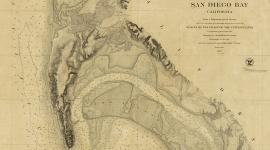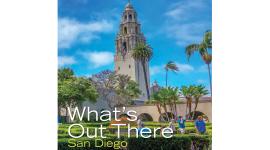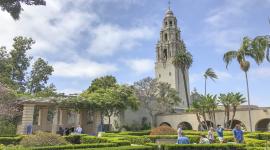Landscape Information
First occupied by the Kumeyaay people, this 40-acre city park encompasses the remains of the San Diego Presidio and the San Diego Mission, the first European settlements founded in the western United States, in 1769. During the Spanish colonial period, the site accumulated several adobe mission buildings, a fort, a crude stockade, wood houses, a cemetery, and military quarters. With the threat of invasion decreasing, inhabitants began to settle in Old Town, at the foot of the hill, and the fort degraded into ruins by the 1830s.
In 1907 George Marston, who was the patron for much of the early work at City Park (now Balboa Park), purchased the hill to preserve the site. Unable to attract public funding for the project, he hired landscape architect John Nolen to create a plan for the park in 1927. Design advice and refinements were provided by landscape architect Roland Hoyt, horticulturist Kate Sessions, and Percy Broell, the latter working initially as a foreman and later as the park’s first superintendent. A small triangular parcel in the southeastern portion of the site, surrounded by Cosoy Way, forms a natural bowl, which Nolen designated to be an amphitheater—one that was never realized. The prominent Spanish Revival-style Junipero Serra Museum, funded by Marston and designed by William Templeton Johnson in 1928 to house the collection of the San Diego Historical Society, is located on a hill in the park’s northern section. Marston donated the park to the city in 1929 and underwrote the construction of the nine-acre Presidio Hills Golf Course three years later. The park contained various evergreen trees, such as torrey pines, deodar cedars, Albany redgums, coast redwoods, and Aleppo pines, many of them located along a network of narrow trails that traverses the steep wooded hillsides. A small recreation center located near the entrance was added in 1975.
















